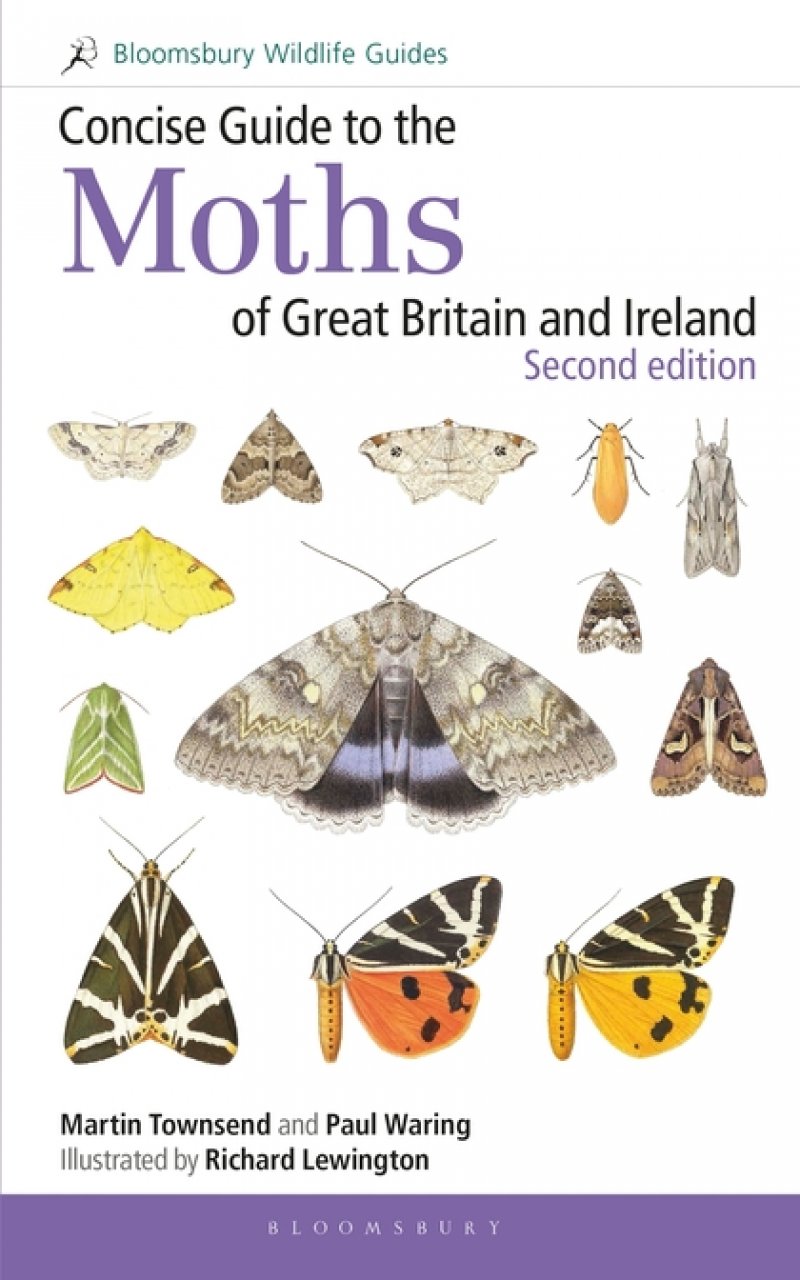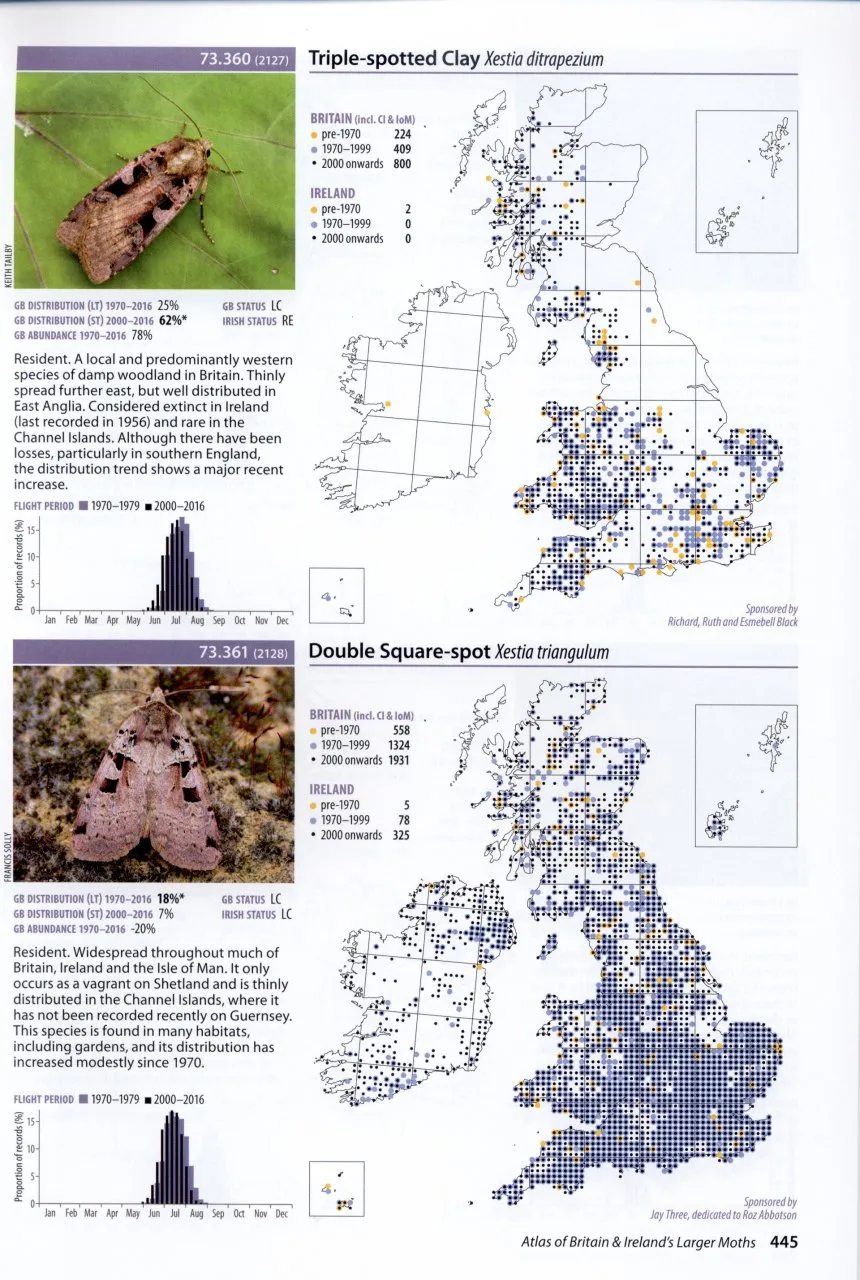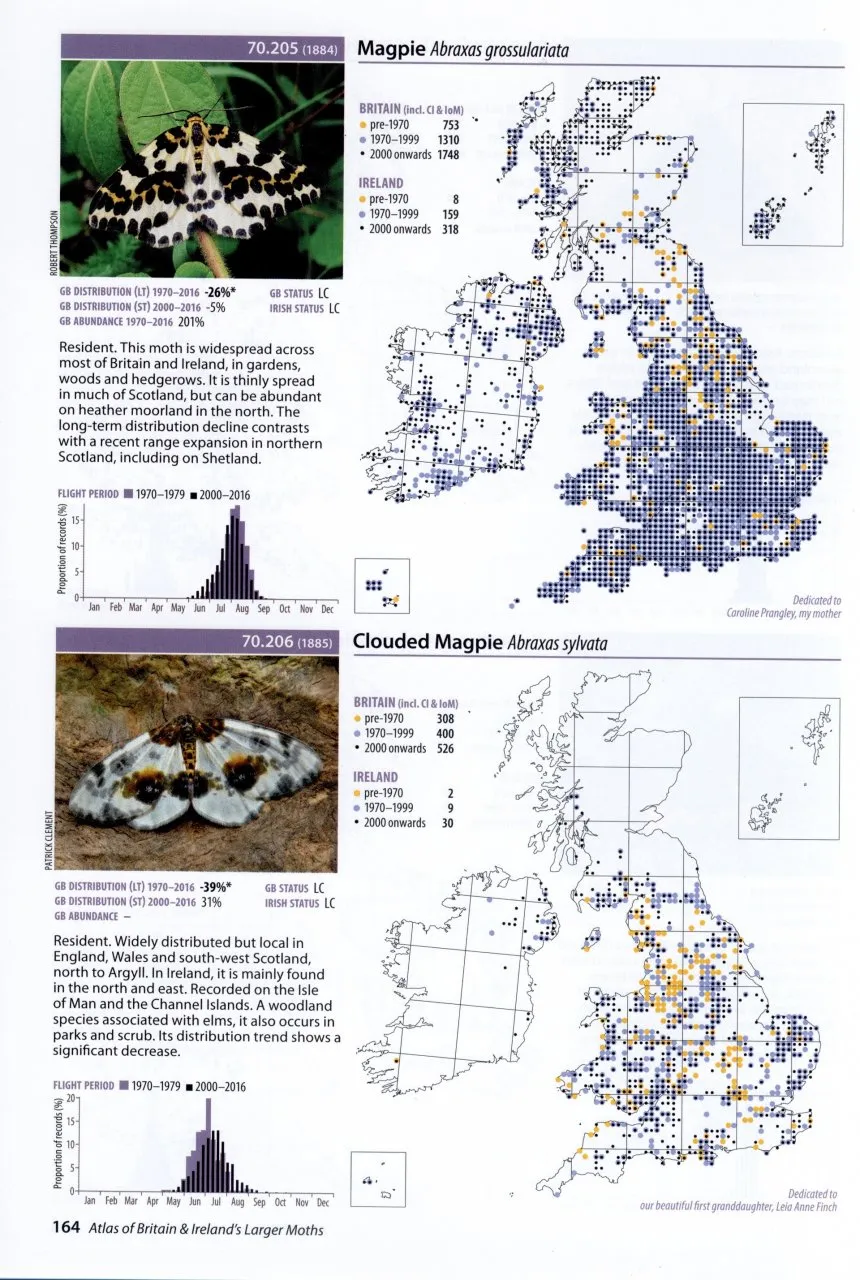The publication of the first edition of the Concise Guide to the Moths of Great Britain and Ireland undoubtedly contributed significantly towards the observation, study, recording and enjoyment of larger moths. This second edition follows the key updates within the comprehensive Field Guide to the Moths of Great Britain and Ireland (by the same authors), including refinements, improvements, the addition of newly discovered species such as the Marigold Shark Cucullia calendulae and new illustrations of existing species, and a major taxonomic upheaval associated with the 2013 British checklist (Agassiz et al. 2013). The 896 species that appear in the Field Guide are depicted within 1,700 exquisite colour artworks by Europe’s leading insect-illustrator, Richard Lewington.
The plates and text have been carefully designed and amended so that each species’ description and its corresponding artwork appear on the same page spread. This use of wire binding is particularly beneficial, allowing the book to be laid flat so that text and images can be readily compared.
View this book on the NHBS website
As is to be expected from a concise guide with limited space, the species accounts lack the level of detail contained within the full Field Guide, but the crucial information on identification features and biometrics is provided. Further concise, but useful, detail on UK status, distribution and habitat preferences is given within the species accounts as codes, which can be easily referenced to keys within the introductory pages. An asterisk is used for resident species that are now considered extinct, or immigrants for which the most recent record is from 1999 or earlier.
The flight season is given here for each generation that the species produces annually. Partial or occasional generations are placed in parentheses, with pre-hibernation and post-hibernation flight periods treated as a single generation.
Another useful carry-over from the three editions of the Field Guide is an introduction to the division between macro-moths and micro-moths, including species accounts and illustrations for micro-moths that may be easily confused with macro-moths. With the increase in the recording of micro-moths, owing in part to the success of the Field Guide to the Micro-Moths of Great Britain and Ireland, is there scope for a concise guide to micro-moths in the future?
This second edition, with its added features for ease of identification, should appeal to beginners to moth-recording and those with a growing interest. As with its predecessor, this edition marks a step forward in promoting the interest in and recording of moths throughout Britain and Ireland.
Reference
Agassiz, D. J. L., Beavan, S. D., & Heckford, R. J. 2013. A Checklist of the Lepidoptera of the British Isles. Royal Entomological Society, St Albans.




